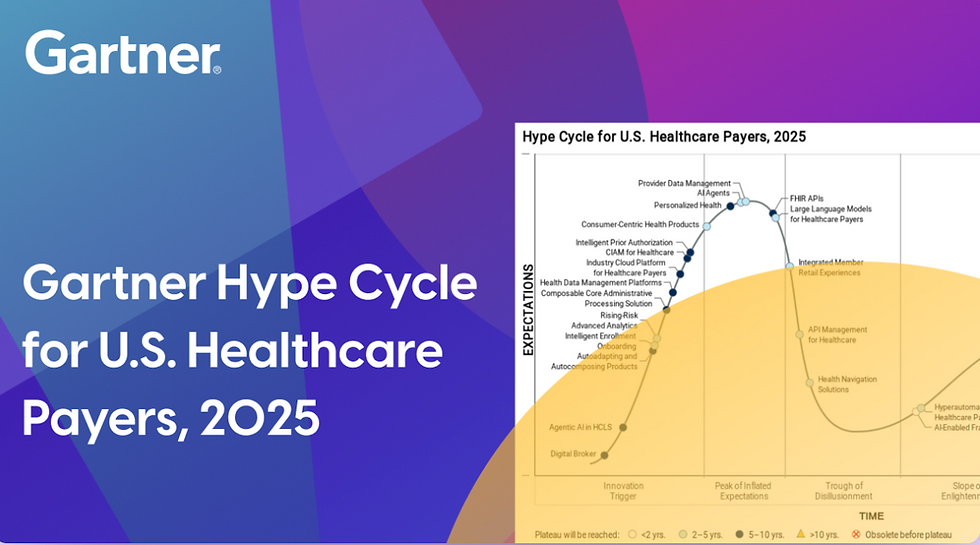OBBBA Provider Tax Provisions Impact on Medicaid Stakeholders
- Katie Barone
- Aug 25
- 4 min read
Originally published by Avalere Health
For decades, provider taxes have attracted scrutiny from policymakers, leading to regulatory changes and restrictions on how states can draw from these funding sources to match federal dollars. Accordingly, healthcare providers, advocacy groups, state and federal governments, and health plans have reviewed, debated, and identified strategies to navigate a complex policy that impacts coverage and access for millions of Americans.
What are State Provider Taxes?
Federal law permits state tax assessments (provider taxes) on 19 provider classes. States are permitted to identify the classes that will be taxed, but the tax must be applied uniformly (without discrimination) across the entire class. All states except AK use provider taxes to help fund their share of Medicaid, with most states assessing a tax on 3+ provider classes. Fifty states and the District of Columbia have at least one provider tax, and 38 states have reported at least one provider tax that exceeds 5.5% as of July 1, 2024.
Section 1903 of the Social Security Act specifies the terms by which each state may receive federal assistance under a state Medicaid plan (i.e., federal matching). That same regulation allows states to use revenue from healthcare-related taxes (including the provider tax) to help fund their Medicaid program. States often use this tax as a financing strategy to “draw down” additional federal Medicaid matching assistance dollars.
The regulation includes:
Provider Tax Regulatory Requirements: A tax is classified as a provider tax if at least 85% of the burden falls on healthcare providers. If the state intends to seek additional federal Medicaid matching funds from the tax revenue, the state must meet several requirements: the tax must be broad (i.e., apply to all providers in the class), uniform (i.e., same tax for all affected providers), and cannot hold providers harmless (i.e., states cannot promise to give the providers their fee back).
State Scope of Authority: States have broad authority in developing financing strategies. For example, they may implement a provider tax to fund increases to Medicaid payment rates without the use of state general funds.
In December 2024, the Congressional Budget Office (CBO) published a report that includes three policy options for limiting provider taxes to reduce the federal deficit:
Lowering the safe harbor percentage from 6.0% to 5.0%
Lowering the safe harbor percentage from 6.0% to 2.5%
Eliminating states’ ability to use Medicaid provider tax revenue as a source of funding for the state’s share of Medicaid expenditures
The One Big Beautiful Bill Act (OBBBA) outlines changes to provider tax provisions that are projected to reduce the federal deficit and impact on states’ Medicaid funding.
What Changed Under the One Big Beautiful Bill Act?
The law will lower the safe harbor percentage, from the current 6% to 5.5% beginning in fiscal year (FY) 2028 and 3.5% in FY 2032, an approach that differs from the December 2024 policy options. The CBO estimates that this policy change will impact at least 9.1 million Medicaid recipients in FY 2034.
Starting October 1, 2026, the policy changes will result in variable impacts across states governments, plans, patients, and providers. These changes will require stakeholders to consider new avenues to address the impact of a reduced tax rate of 3.5%. Under the OBBBA, states that have elected to assess a provider tax at more than 3.5% will see the greatest impact based on the recent policy changes.
The most impactful changes anticipated include:
A reduction in state revenue and changes in state legislation to account for federal changes
Changes in Medicaid recipients’ access to coverage and care as some rural patients navigate potential closures to facilities and other patients fail to meet eligibility requirements
Loss of coverage for Medicaid recipients leading to potential shifts to other marketplace coverage options (e.g., Affordable Care Act Exchange enrollment)
State Medicaid Programs’ Responses and Downstream Impacts
State Medicaid Programs’ Responses and Downstream Impacts
Some states will need to change their Medicaid financing strategies because of provisions in the OBBBA. Expansion states that taxed several eligible provider classes at more than 3.5% will need to adjust their approaches to financing their portion of Medicaid spending to account for lower provider tax rates.
These adjustments may impact healthcare providers such as hospitals, managed care organizations, and nursing facilities. States could take some of the following actions as a response to reduced funding:
Restrict Eligibility: States could restrict eligibility requirements to reduce enrollment in Medicaid. Potential shifts in eligibility requirements could have a disparate impact on certain patient populations, leading to shifts in types of coverage or barriers to care access. For health plans, this would lead to decreased enrollment. For providers, this could lead to a shift in insurance mix, either to higher rates of uninsured or those insured through Exchange or employer-based coverage.
Reduce Payment Rates: States could reduce payment rates to managed care organizations in response to reduced funding. This would both reduce the amount of reimbursement plans receive for providing coverage and impact provider reimbursement rates.
Reduce Benefits: States could reduce the number and types of benefits, particularly supplemental benefits and in lieu of services, included in their Medicaid program. For example, they could remove coverage for non-emergency transportation services or meal services. As a result, plans would be required to either eliminate coverage of these benefits or absorb the costs.
Next Steps
The legal and regulatory environment for Medicaid has undergone significant and impactful policy changes since the beginning of the second Trump administration, leading to potential challenges as various stakeholders determine which Medicaid policy changes to prioritize. Understanding both potential state strategies and opportunities to address gaps in care and coverage are essential to strategically approaching the current Medicaid landscape.
Avalere Health partners with health plans and providers to help them to successfully navigate the shift in policies and help curate plans to help you prioritize your business needs in response.





Comments